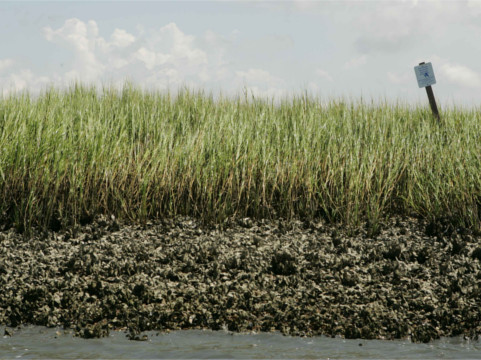
Corresponding Author: James E. Byers, jebyers@uga.edu
For any ecosystem, interactions between parasites and their hosts are complex, and are often influenced by changing environmental conditions. Even at small spatial scales, such as coastal intertidal zones, changing conditions can affect parasite abundance and infection rates, which may ultimately regulate the distribution of an ecosystem’s larger organisms. Along coastal areas of Georgia and South Carolina, eastern oysters (C. virginica), an important shellfish species, are rarely found in subtidal zones, a pattern which has previously been attributed to higher exposure to waterborne parasites. In a recent study, Odum School of Ecology alumni Jennafer Malek and CEID member Jeb Byers set out to investigate how tidal elevation affects the ability of two lethal parasites (P. marinus and H. nelsoni) to infect eastern oysters, with the goal of confirming this hypothesis. By manipulating oysters in intertidal and subtidal areas, they were able to test whether infection by the parasites was different in each zone.Their results, however, told a different story. They found that infection intensity of P. marinus and infection prevalence of H. nelsoni were actually higher in intertidal zones, which is the preferred habitat of oysters. While their results didn’t answer the question as to why oysters are scarcely found subtidally, their study does show that environment effects on host-parasite interactions vary depending on parasite species. Additional studies that help explain patterns of parasite infection are necessary for the conservation of ecologically important species.
Malek, J. C., & Byers, J. E. (2017). The effects of tidal elevation on parasite heterogeneity and co-infection in the eastern oyster, Crassostrea virginica. Journal of Experimental Marine Biology and Ecology, 494, 32-37. doi:10.1016/j.jembe.2017.05.004